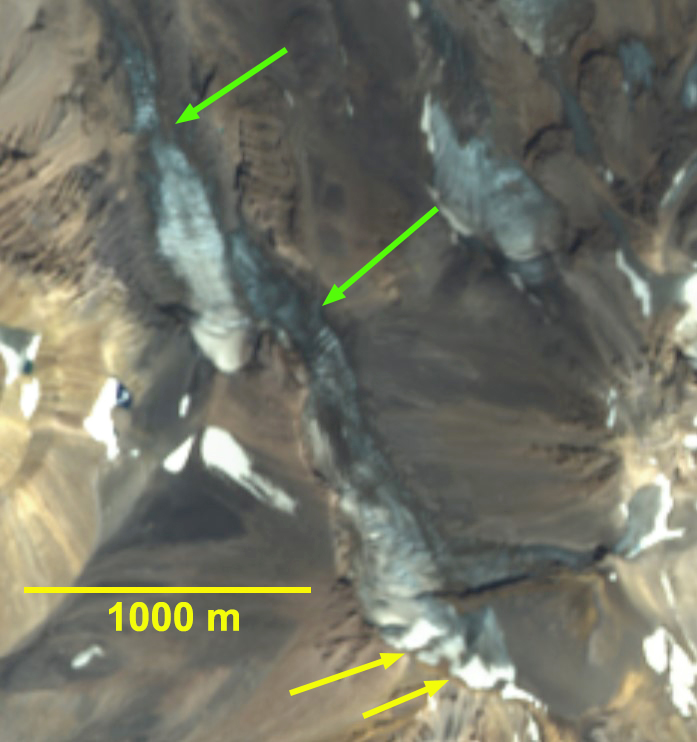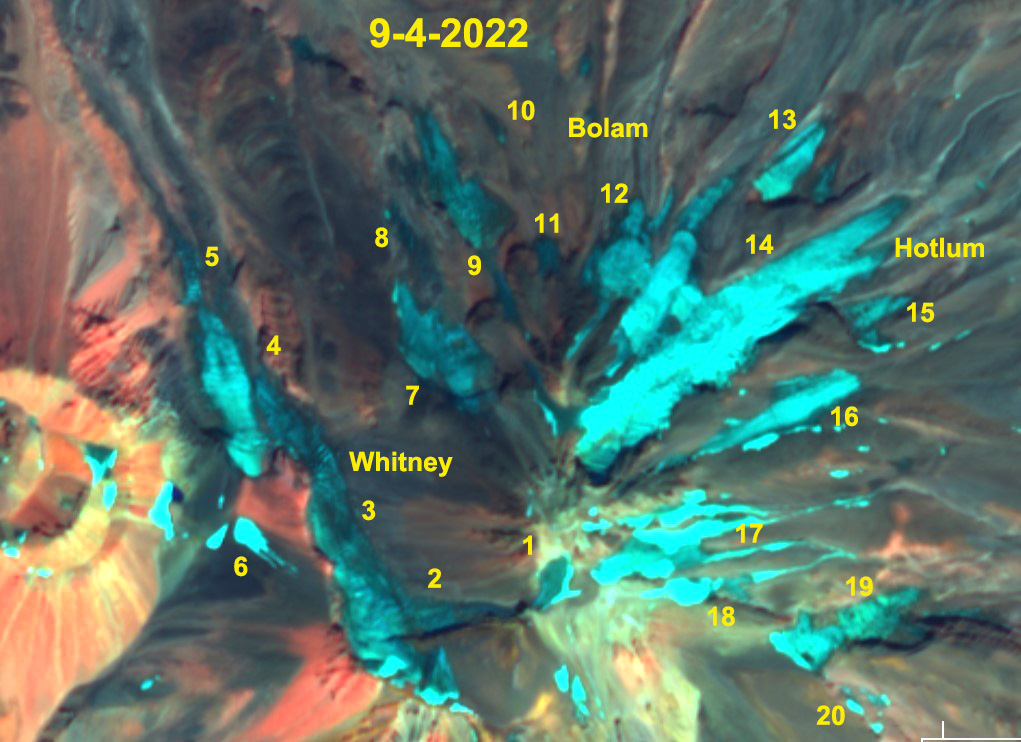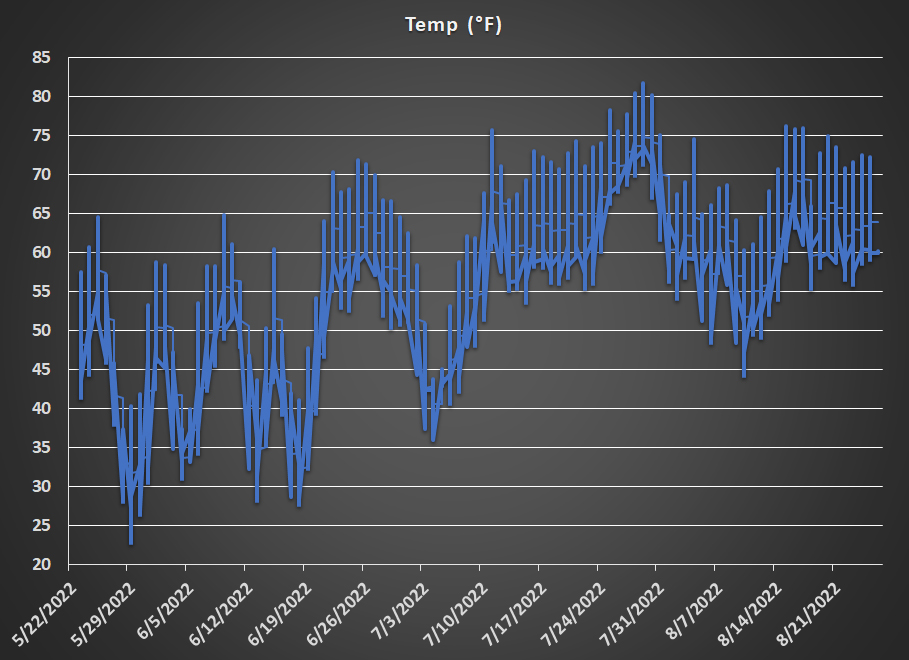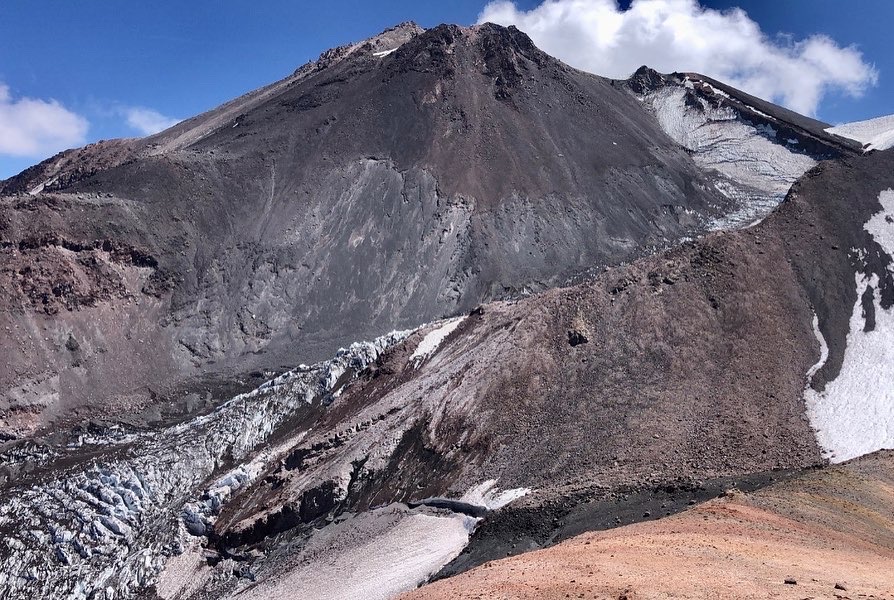August 26, 2022
Whitney Glacier, Mount Shasta snow free again in 2022
Posted by Mauri Pelto
Whitney Glacier on August 25, 2022 in Sentinel image. Green arrows separation points, yellow arrows remaining snowpack
The summer of 2021 proved to be catastrophic for Whitney Glacier on Mount Shasta, California in terms of volume loss, ~15% leading to long term impacts, such as the 50% area reduction and 1000 m retreat since 2005. The glacier lost 100% of its 2021 snowpack and was in the process of separating into three segments. In 2022 it was important for the glacier to offset some of this loss with a healthy retained snowpack through the sumer. Unfortunately by mid-August it is evident that the glacier will again be snow free by end of summer in 2022. This will continue the rapid area and volume loss and continue the separation process.
Here we examine local weather records and Sentinel imagery to illustrate the conditions in 2022. The winter of 2022 started off well with near record December snowfall, followed by limited snowfall and temperatures averaging +3 C in Shasta County, until another big month in April. The results was well below average snowpack in early spring. A cool wet April and May preserved the limited snowpack. July experienced average temperatures 2.2 C above normal in Shasta County (NCEI-NOAA County Mapping)
Whitney Glacier in Sentinel images from 8-30-2020, 8-31-2021 and 8-15-2022. Green arrows separation points, yellow arrows remaining snowpack and T=terminus location,.
Fragmentation of the three main glaciers in the last two years is evident in the comparison from 9-4-2020 and 9-4-2022, there are six fragments (X) that have melted away also.
A comparison of August snowcover from 2020-2022 illustrates the small patch that remained in 2021, yellow arrow, and the small patches left in mid-August of 2022. The ongoing separation is evident at two locations sho.w with green arrows. From August 2020-August 2022 the glacier area has declined from 0.72 km 2 to 0.57 km 2 a ~20% loss. The width of the glacier at the two arrows has been reduced by ~50% to 50 m at the lower elevation of 3250 mand 100 m at the upper elevation of 3600 m. A key issue this summer again has been the high temperatures in July and August, in particular the high minimum temperatures, preventing the snow surface from freezing at night and shutting off the melt. At Gray Butte, 2450 m, the remote weather station indicates a period from July 9-August 7 where the temperature never dropped below 10 C (50 F).
Gray Butte summer temperatures at an hourly interval (Data from Mount Shasta Avalanche Center)
The velocity in two primary icefalls above each of the separation points is declining based on the NASA_IT’s LIVE application. The reduced flux combined with high summer melt in 2021 and 2022 will continue to accelerate the separation.
Velcoity data for two icefall locations on Whitney Glacier 2019-early 2022, from NASA_ITs-LIVE application
Whitney Glacier Icefall at the green arrow seen on 8-15-2022 ( Mount Shasta Avalanche Center). Note the thin upper arm of the glacier.









 Dean of Academic Affairs at Nichols College and Professor of Environmental Science at Nichols College in Massachusetts since 1989. Glaciologist directing the North Cascade Glacier Climate Project since 1984. This project monitors the mass balance and behavior of more glaciers than any other in North America.
Dean of Academic Affairs at Nichols College and Professor of Environmental Science at Nichols College in Massachusetts since 1989. Glaciologist directing the North Cascade Glacier Climate Project since 1984. This project monitors the mass balance and behavior of more glaciers than any other in North America.
Mount Shasta is in Siskiyou County, California.
[…] Source link […]
I noticed this referenced Shasta County climate data, Mt. Shasta and Whitney glacier are in Siskiyou County and there are weather stations geographically closer. Was there a reason that data was not used for this analysis?
In providing a prompt analysis the data from Siskiyou County was not available at that time.